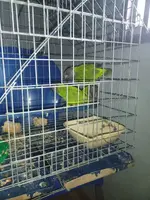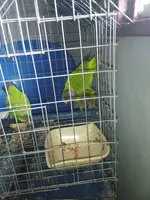Hello everyone,
Greetings from Africa.
I have two question to ask wonderful people in the forum.
1. I bought 2 Senegal parrot a month ago and I got another one two days ago, but when I brought in the new one into the cage I house the previous two, I notice the new one is a bit stubborn and attacks the other two when they go new him/her especially if the attempt eating from the bowl. And he/she eats a lot, and practically did not allow others to eat and will finish the food that belongs to three of them. One of the previous is always in panic he/she avoids him/her totally and will never new the food bowl... This is getting me worried and I like to keep all of them in one cage.
2. Is there a way I can know the sex of the three of them because I don't know and I don't believe what the seller told me.
Thank you in advance for your help.
Greetings from Africa.
I have two question to ask wonderful people in the forum.
1. I bought 2 Senegal parrot a month ago and I got another one two days ago, but when I brought in the new one into the cage I house the previous two, I notice the new one is a bit stubborn and attacks the other two when they go new him/her especially if the attempt eating from the bowl. And he/she eats a lot, and practically did not allow others to eat and will finish the food that belongs to three of them. One of the previous is always in panic he/she avoids him/her totally and will never new the food bowl... This is getting me worried and I like to keep all of them in one cage.
2. Is there a way I can know the sex of the three of them because I don't know and I don't believe what the seller told me.
Thank you in advance for your help.




